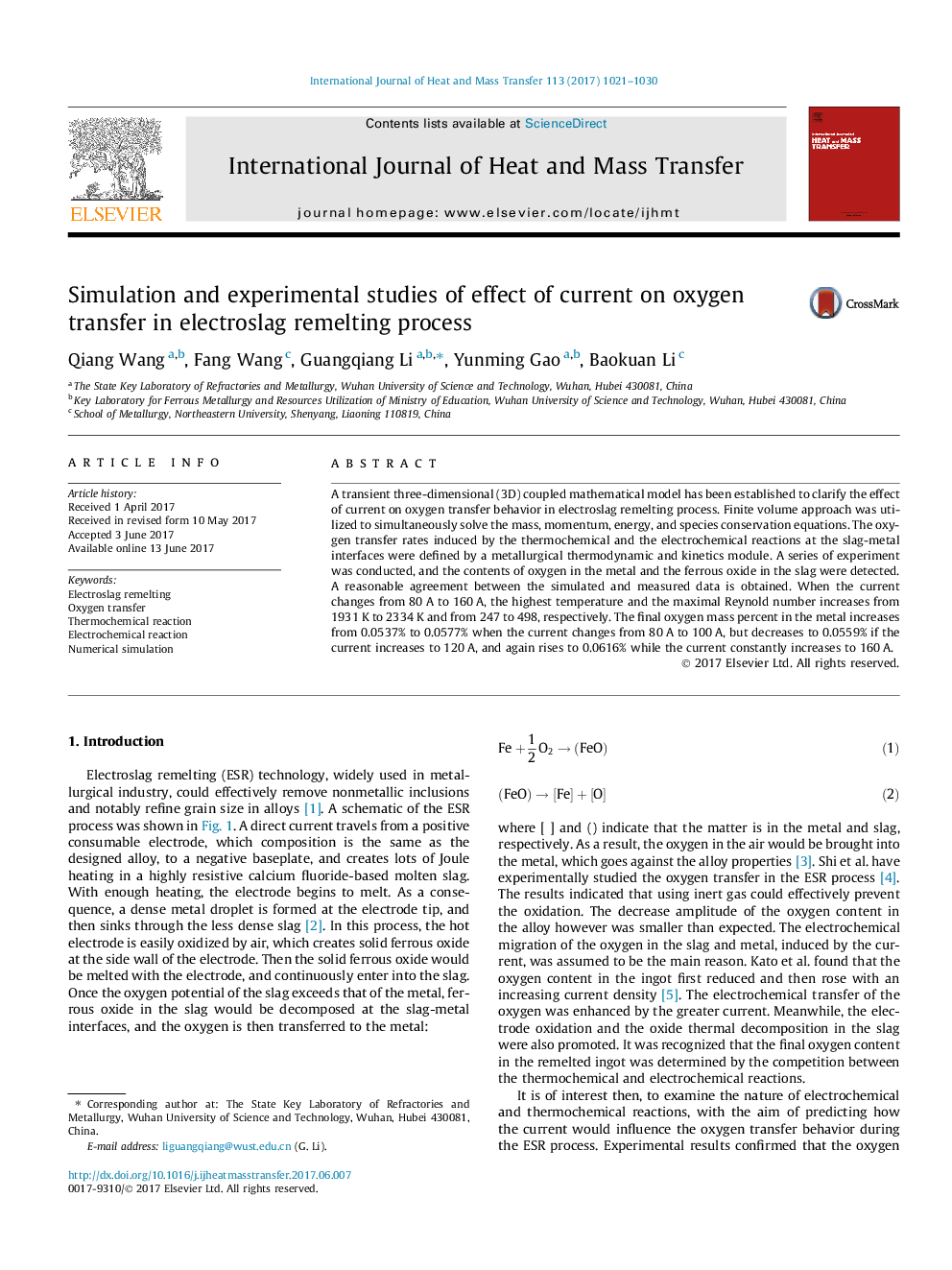| Article ID | Journal | Published Year | Pages | File Type |
|---|---|---|---|---|
| 4994231 | International Journal of Heat and Mass Transfer | 2017 | 10 Pages |
Abstract
A transient three-dimensional (3D) coupled mathematical model has been established to clarify the effect of current on oxygen transfer behavior in electroslag remelting process. Finite volume approach was utilized to simultaneously solve the mass, momentum, energy, and species conservation equations. The oxygen transfer rates induced by the thermochemical and the electrochemical reactions at the slag-metal interfaces were defined by a metallurgical thermodynamic and kinetics module. A series of experiment was conducted, and the contents of oxygen in the metal and the ferrous oxide in the slag were detected. A reasonable agreement between the simulated and measured data is obtained. When the current changes from 80 A to 160Â A, the highest temperature and the maximal Reynold number increases from 1931Â K to 2334Â K and from 247 to 498, respectively. The final oxygen mass percent in the metal increases from 0.0537% to 0.0577% when the current changes from 80Â A to 100Â A, but decreases to 0.0559% if the current increases to 120Â A, and again rises to 0.0616% while the current constantly increases to 160Â A.
Keywords
Related Topics
Physical Sciences and Engineering
Chemical Engineering
Fluid Flow and Transfer Processes
Authors
Qiang Wang, Fang Wang, Guangqiang Li, Yunming Gao, Baokuan Li,
